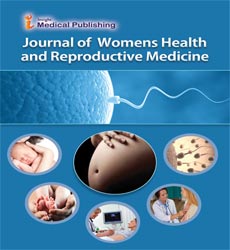Neutrophil-to-Lymphocyte Propotion in Bosom Disease Patients
Joseph Jamieson*
Department of Gynecology and Obstetrics, Emory University School of Medicine, Atlanta, Georgia
- *Corresponding Author:
- Joseph Jamieson
Department of Gynecology and Obstetrics,
Emory University School of Medicine, Atlanta,
Georgia,
E-mail: Jamieson@gmail.com
Received date: November 09, 2023, Manuscript No. IPWHRM-23-18385; Editor assigned date: November 13, 2023, PreQC No. IPWHRM-23-18385 (PQ); Reviewed date: November 27, 2023, QC No. IPWHRM-23-18385; Revised date: December 04, 2023, Manuscript No. IPWHRM-23-18385 (R); Published date: December 11, 2023, DOI: 10.36648/ipwhrm.7.3.69
Citation: Jamieson J (2023) Neutrophil-to-Lymphocyte Propo rtion in Bosom Disease Pa tients. J Women’s Health Reprod Med Vol.7 No.3:69.
Introduction
Neutrophil-to-Lymphocyte Ratio (NLR) has been perceived as a marker of fundamental irritation with a prognostic effect in patients with different malignant growths, including bosom disease. The point of this study was to explore the connections between the preoperative NLR and bosom malignant growth guess in the patients when menopausal age, and its relationship with other prognostic variables. A sum of 1868 patients with clinical Stage I-III essential bosom malignant growth were enlisted. The relationship between clinicopathological factors and the preoperative NLR were investigated, and Relapse Free Survival (RFS) and generally speaking Endurance (operating system) were assessed. Then again, past examinations have shown that persevering irritation likewise assumes a significant part in growth improvement and movement, and that a fundamental provocative reaction is related with an unfortunate guess in patients with different kinds of disease. As of late, the Neutrophil-to-Lymphocyte Ratio (NLR) has been progressively perceived as a marker of foundational irritation that has a prognostic effect in patients with different sorts of disease. A few examinations have likewise revealed that a high NLR before therapy predicts more unfortunate endurance in bosom malignant growth patients.
Clinicopathological Characteristics
The prognos tic effect of the NLR has been displayed in to differ as per bosom malignant growth subtypes.In any case; apparently, no past reports have exhibited a relationship between the prognostic effect of the preoperative NLR and other prognostic variables in bosom disease, particularly the menopausal status. The reason for the current review was to explore the connections between the preoperative NLR and bosom disease guess particularly in the patients when menopausal age, and its relationship with other prognostic variables. The menopausal status is likewise viewed as a significant variable for impacting therapy determination and endurance in bosom malignant growth patients. Specifically, the decision of endocrine treatment for bosom malignant growth relies upon the menopausal status since ladies have various wellsprings of estrogen creation when menopause. Ladies experience numerous physiological changes because of a sensational lessening in estrogen creation during menopause. As of late, the NLR was found to contrast between ladies when menopausal age. Subsequently, in cutting edge gastric disease patients, including stage II/III patients specifically, a medical procedure based multidisciplinary therapy approach, including adjuvant chemotherapy, is justified to work on both in general endurance and personal satisfaction. Truth be told, a past report revealed that adjuvant chemotherapy with S-1, an oral fluoropyrimidine, essentially affected in general endurance in patients with correctively resected privately progressed gastric disease. Subsequently, to work on the general endurance of resected gastric disease patients, adjuvant chemotherapy is expected in the early postoperative period, working on transient results, including perioperative entanglements, or working with the early discovery of malignant growth repeat.
Menopausal Status
In the current review, a high preoperative NLR was related with an unfortunate forecast in bosom malignant growth patients. In any case, examinations defined by the menopausal status uncovered that a high NLR was fundamentally connected with more terrible RFS and operating system in postmenopausal patients, yet not in premenopausal patients. Also, albeit the postmenopausal patients with backslid malignant growth would in general have higher NLR levels than those without backslide, the NLR levels of premenopausal patients with backslid disease and the preoperative NLR can be a valuable prognostic marker, particularly in postmenopausal bosom disease patients. The connections between the NLR and bosom disease anticipation might be more obvious when patients are surveyed by their menopausal status. The preoperative NLR is notable as a profoundly repeatable, financially savvy and broadly accessible marker of the drawn out postoperative guess of gastric malignant growth patients. Besides, late investigations have detailed that the preoperative NLR can foresee the anticipation of cutting edge gastric malignant growth patients treated with adjuvant chemotherapy. In any case, the utility of the preoperative NLR in anticipating transient results or sickness free endurance of resected gastric disease patients stays muddled. In the current review, we reflectively tended to whether the preoperative NLR is an indicator of the present moment and long haul results of gastric malignant growth patients. Moreover, we inspected the degree to which the preoperative NLR can influence the general endurance as well as the illness free endurance of resected progressed gastric disease patients treated with adjuvant chemotherapy.
Open Access Journals
- Aquaculture & Veterinary Science
- Chemistry & Chemical Sciences
- Clinical Sciences
- Engineering
- General Science
- Genetics & Molecular Biology
- Health Care & Nursing
- Immunology & Microbiology
- Materials Science
- Mathematics & Physics
- Medical Sciences
- Neurology & Psychiatry
- Oncology & Cancer Science
- Pharmaceutical Sciences
